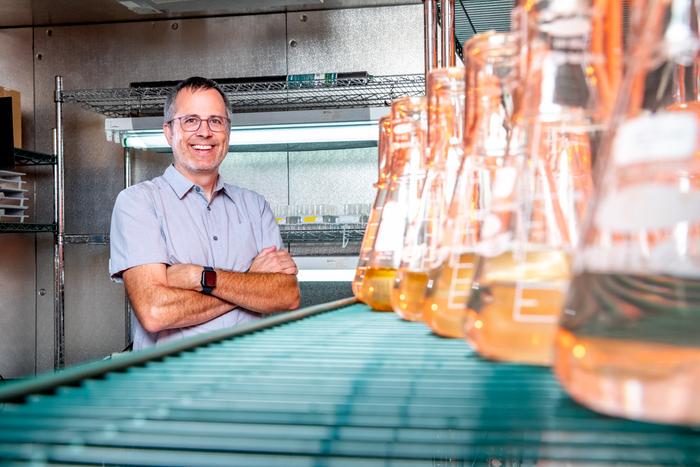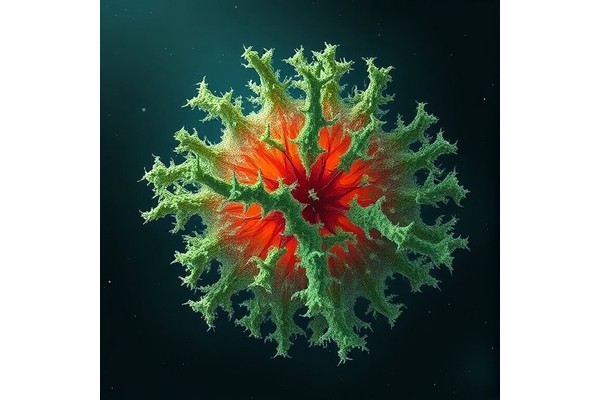New Study Unravels Diatom Evolution, Offering Fresh Insights into Earth’s Mysteries
New Study Unravels Diatom Evolution, Offering Fresh Insights into Earth’s Mysteries

In the vast tapestry of Earth’s biological history, diatoms often occupy a quiet yet monumental role. These microscopic photosynthetic algae contribute nearly a fifth of the planet’s oxygen production, rivaling the much-celebrated trees. Found almost everywhere there is water and sunlight, diatoms form the backbone of aquatic food webs and exert substantial influence over vital biogeochemical cycles. Recent groundbreaking research led by the University of Arkansas has unveiled a transformative epoch in diatom evolution, reshaping our understanding of how life beneath the waves has adapted and diversified over millions of years.
For the first 100 million years following their emergence, diatoms exhibited an evolutionary pace marked by gradual, incremental change. This long period of slow diversification was dramatically upended approximately 170 million years ago, when diatoms underwent a sudden and rapid burst of speciation. This pulse of evolutionary activity dwarfed anything seen prior in their lineage, marked not only by proliferation in species numbers but also profound morphological innovations. Alterations in cell shape and size, shifts in reproductive strategies, and multiple and repeated transitions from marine to freshwater habitats—barriers that many aquatic organisms find insurmountable—all characterize this extraordinary phase.
The research, published in the prestigious Proceedings of the National Academy of Sciences, represents nearly a decade of painstaking analysis. Spearheaded by Andrew Alverson, a biological sciences professor at the University of Arkansas, this ambitious study integrates fossil records spanning geologic eras with modern genomic technologies. By sequencing thousands of genes across 181 diatom species, the team constructed an unprecedented phylogenomic framework, allowing for precise reconstruction of family relationships and evolutionary milestones.
One key insight emerging from this analysis is the role of genetic duplication events in facilitating diatom diversification. Similar to whole-genome duplications observed in flowering plants—which have long been known to fuel bursts of diversity—diatoms appear to have experienced sudden increases in genetic material during their evolutionary acceleration. These duplications provide raw genetic fodder, opening novel evolutionary pathways by enabling genes to acquire new functions while preserving existing ones.
Understanding the tempo and mechanism of diatom evolution sheds new light not only on the history of these organisms but also on broader Earth system processes. Diatoms significantly influence the cycling of essential elements such as nitrogen, silicon, and phosphorus in both marine and freshwater ecosystems. Silicon, in particular, is a critical element as diatoms’ silica-based cell walls constitute a major sink for this element in the oceans. Notably, geological records indicate a precipitous drop in oceanic silicon concentrations concurrent with the diatom evolutionary explosion, hinting at their transformative impact on ocean chemistry.
Equally intriguing are the correlations between diatom evolutionary history and rising atmospheric oxygen levels. As diatoms increased in abundance and diversity, Earth’s environment experienced shifts in oxygen concentration, potentially mediated by changes in primary production and nutrient cycling. This intricate interplay emphasizes the interconnectedness of biological evolution and Earth’s physical and chemical milieus, each shaping the other in complex feedback loops.
Despite these revelations, many mysteries remain. Identifying the drivers behind the abrupt transition from slow diversification to rapid expansion is a frontier challenge. Possible explanations include major environmental upheavals, shifts in ocean chemistry, or ecological opportunities arising from extinction events that cleared niches for diatoms to fill. The research team continues to explore these possibilities, integrating paleoenvironmental data to map the evolutionary saga of diatoms onto global Earth history.
Technical advances underpinning the study were critical to its success. The researchers combined traditional paleontological data with next-generation sequencing technologies, enabling them to unravel the transcripts—the expressed portions of the genome—across hundreds of species. Computational simulation and modeling techniques then facilitated the reconstruction of ancestral genome features and evolutionary timing, tackling questions unapproachable with fossil data alone.
The scale and depth of this research represent a milestone in evolutionary biology, establishing diatoms as a model for understanding macroevolutionary patterns. By bridging molecular genetics, fossil evidence, and computational analytical methods, the work opens new avenues to examine how microscopic organisms can drive planetary-scale processes. As diatoms pervade aquatic environments across the globe, these insights may also inform future studies on ecosystem responses to environmental change and even biotechnological applications harnessing diatom biology.
Professor Andrew Alverson, leading this international collaboration, emphasizes that while much has been unveiled, the evolutionary story of diatoms is far from fully told. Continual efforts integrating genomic data with geochemical and ecological perspectives promise to further elucidate how these tiny architects of oxygen and nutrient cycles have shaped—and continue to influence—life on Earth. The “slow-burning fuse” of diatom evolution, once ignited, illuminates fundamental questions about life’s adaptability, diversification, and resilience in a complex and changing world.
Subject of Research: Not applicable
Article Title: Phylogenomics reveals the slow-burning fuse of diatom evolution
News Publication Date: 29-May-2025
Web References: https://www.pnas.org/doi/10.1073/pnas.2500153122
Image Credits: University Relations
Keywords: Diatoms, Evolution, Phylogenomics, Genome Duplication, Speciation, Photosynthetic Microalgae, Aquatic Ecosystems, Biogeochemical Cycles, Silicon Cycling, Atmospheric Oxygen, Fossil Record, Transcriptomics
ECoG Reveals Syntax Encoding and Timing Dynamics
Next PostExploring the Impact of Individual and Community Incarceration on Mortality Rates
Ultrafast Water Purification via Sustainable Nanofiltration Membranes







